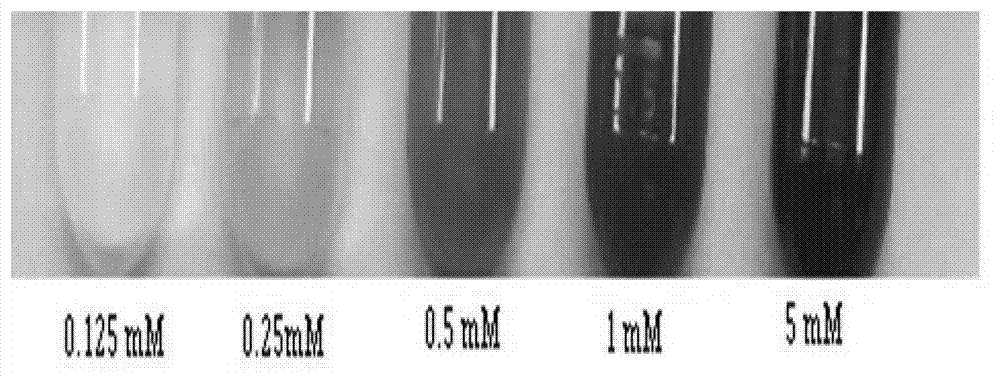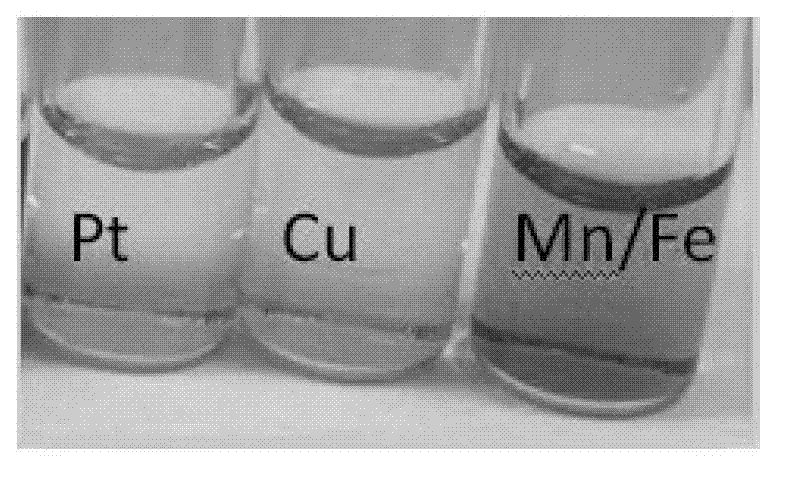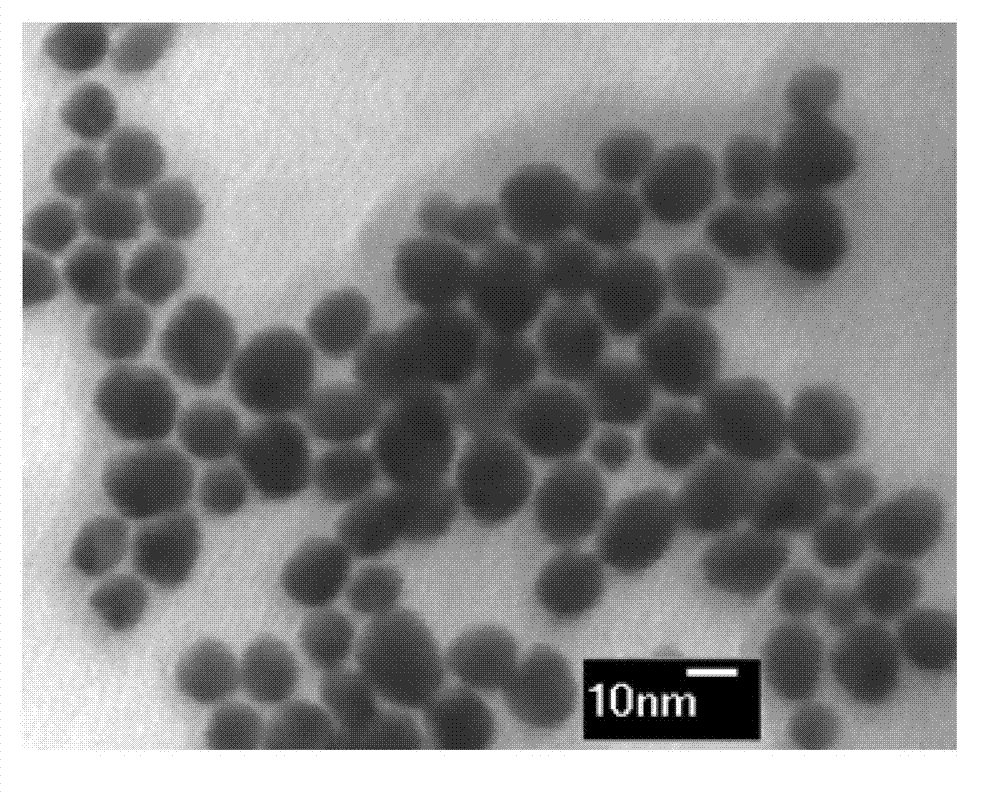Environmentally-friendly synthetic method for metal nanoparticle
A metal nanoparticle, green synthesis technology, applied in the field of nanomaterials, can solve the problems of limiting the synthesis of nanometer metal particles, the reaction conditions cannot be optimized, and it takes a long time and energy to shorten the reduction reaction time, the synthesis time is short, and the production cost is shortened. low effect
- Summary
- Abstract
- Description
- Claims
- Application Information
AI Technical Summary
Problems solved by technology
Method used
Image
Examples
Embodiment 1
[0034] Synthesis of nano-gold spheres by green method:
[0035] Dissolve 5 grams of sodium chloride, 3 grams of yeast extract, 3 grams of malt extract, 5 grams of tryptone, and 5 grams of glucose in 1 liter of deionized water and stir until dissolved. NaOH was added to the above aqueous solution to adjust the pH to 12. Under the condition of stirring at 500 rpm, an aqueous solution of chloroauric acid was added. After mixing, the concentration of chloroauric acid was 1 mmol / L. The reaction was carried out at room temperature for 24 hours to obtain gold nanospheres.
[0036] figure 1 It is a transmission electron microscope image of nano-gold spheres, and it can be clearly seen that the obtained gold nanoparticles are basically spherical.
[0037] figure 2 The XRD spectrum of the nano-gold sphere is very consistent with the standard spectrum of the nano-gold sphere.
[0038] image 3 It is a 1mM nanometer gold sphere laser particle size distribution diagram. The analysis ...
Embodiment 2
[0040] Synthesis of nano-golden flowers 1 by green method:
[0041] The proportion of materials is the same as that of Example 1, except that the final concentration of adding chloroauric acid aqueous solution is 5.0mmol / L. The obtained nano-gold is like a flower, and the particle size distribution data show that the average particle diameter is 71nm, and the particle size distribution index is 0.15, such as Figure 4 shown.
Embodiment 3
[0043] Synthesis of silver nanospheres by green method:
[0044] Dissolve 5 grams of sodium chloride, 3 grams of yeast extract, 3 grams of malt extract, 5 grams of tryptone, and 10 grams of glucose in 1 liter of deionized water and stir until dissolved. NaOH was added to the above aqueous solution to adjust the pH to 10. Under the stirring condition of 600 rpm, an aqueous solution of silver nitrate was added, and the concentration of silver nitrate after mixing was 1 mmol / L. The reaction was carried out at room temperature for 12 hours to obtain silver nanospheres.
[0045] Different initial concentrations of silver nitrate lead to different sizes of silver nano-solutions, such as Figure 5 shown. When the concentration of silver nitrate after mixing is 2.5mmol / L, the nano-silver laser particle size distribution obtained is as follows: Figure 6 shown.
PUM
| Property | Measurement | Unit |
|---|---|---|
| The average particle size | aaaaa | aaaaa |
| The average particle size | aaaaa | aaaaa |
| Size | aaaaa | aaaaa |
Abstract
Description
Claims
Application Information
 Login to View More
Login to View More - R&D
- Intellectual Property
- Life Sciences
- Materials
- Tech Scout
- Unparalleled Data Quality
- Higher Quality Content
- 60% Fewer Hallucinations
Browse by: Latest US Patents, China's latest patents, Technical Efficacy Thesaurus, Application Domain, Technology Topic, Popular Technical Reports.
© 2025 PatSnap. All rights reserved.Legal|Privacy policy|Modern Slavery Act Transparency Statement|Sitemap|About US| Contact US: help@patsnap.com



